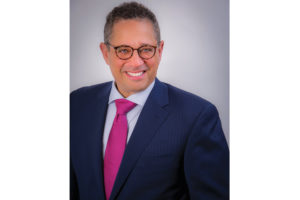Be Wise About Wisdom Teeth
What should you do with those third molars?
Each year about 4 million people remove 10 million wisdom teeth—that third set of molars in the back four corners of your mouth. These extractions occur primarily among 15 to 25-year-olds, those at the age when wisdom teeth generally become an issue.
Interestingly wisdom teeth have not been needed for thousands of years, since our diets included more cooked and softer foods. Some think of them as akin to our appendix.
And like the appendix, wisdom teeth can become a pressing medical problem. Your dentist may refer you to an oral surgeon because of current problems or a strong possibility of future issues. Early intervention may greatly reduce complications associated with extracting the teeth.
In deciding to keep or remove your wisdom teeth, here are some things to consider.
How can you tell if wisdom teeth need to be removed? There’s no simple answer, but it’s more likely if you’re having symptoms. For example if there’s pain, infection, gum disease (which can destroy supporting bone), teeth crowding, impacted teeth or other problems. Sometimes you won’t have symptoms, although there may be decay on the wisdom teeth or adjacent teeth. Plus bacteria harmful to other teeth and gums resulting in chronic inflammation can have cardiac health implications. In rare cases, cystic lesions or tumors can occur around impacted teeth.
When should wisdom teeth be evaluated? Typically, when your child becomes a teen. Your oral surgeon may recommend removing the teeth and the best time to do that. Optimal timing depends on root formation—less developed roots makes extraction less complicated and less risky.
If you’re getting the teeth removed, how do you prepare? Check with your surgeon to discuss your anesthesia choices. If sedated, don’t eat or drink 8 hours before your appointment. And have a driver to take you home. You aren’t permitted to drive yourself.
What’s the procedure like? It’s an outpatient procedure done with some type of sedation or general anesthesia. You’ll talk with your oral surgeon about your health, medical history, medications and anxiety level to be evaluated and to determine the best anesthesia option.
A typical case takes about 20 to 30 minutes of actual surgical time to remove four bony impacted teeth (teeth inside the jawbone). But expect to be in the office for one-and-a-half to two hours for anesthesia, set up and recovery.
The set up process includes several monitors for your safety including EKG, cardiac monitor, blood pressure, and measures of oxygen in the blood. A stethoscope is placed on your airway to monitor breathing sounds.
What happens after the procedure? You’ll be taken to a recovery area and closely monitored. Your surgeon will determine when you’re ready for discharge.
What’s the post-operative care? Rest for the next 24 hours. And even with difficult cases, recovery should be smooth and comfortable with minimal to moderate swelling and minimal to moderate discomfort. A smooth recovery is possible without using narcotics. Given current concerns with opioids, patients are encouraged to use alternatives. There are non-opioid pain options that have proven to be equally effective.
What should I expect? Expect minimal bleeding that should subside over the first 24 hours and some stiffness in the jaw over the first week. Doing jaw-stretching exercises after the first several days can help. Limit your diet to soft foods for a few days to minimize chewing and avoid aggravating the muscles. At day 5 you’ll use a syringe to irrigate the area and begin brushing gently over the incisions.
What about a return visit? Most surgeons use sutures that dissolve in 3 to 5 days, so there’s no need to return to have them removed. However, patients are encouraged to feel free to call if there are any questions, symptoms or other concerns.
Oral surgeons are experts at this procedure. Let them share their wisdom.

A graduate of Boston College, Dr. Famiglio earned his dentistry degree from Temple University and completed his oral and maxillofacial surgery training at Saint Luke’s/Roosevelt Trauma center in Manhattan. He’s a board-certified oral surgeon, among the top 1% in the country, and brings his expertise home to where he was born and raised. Offices in Exton and Brandywine. BrandywineOralSurgery.com.
